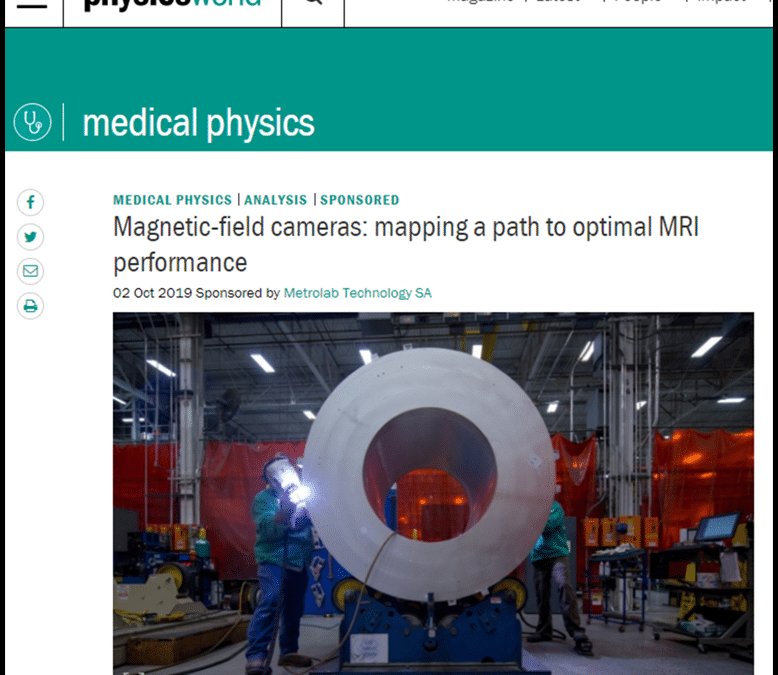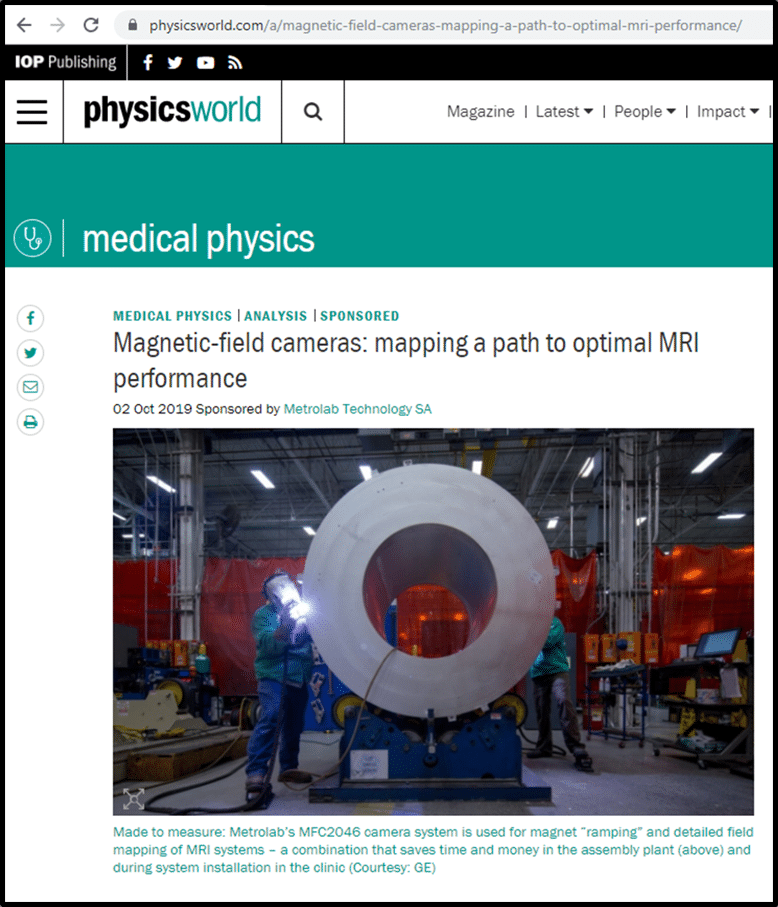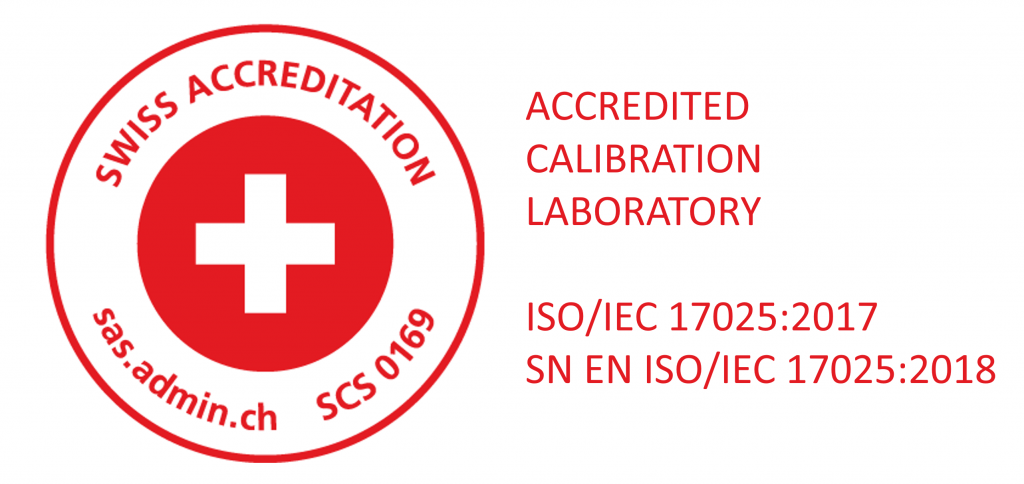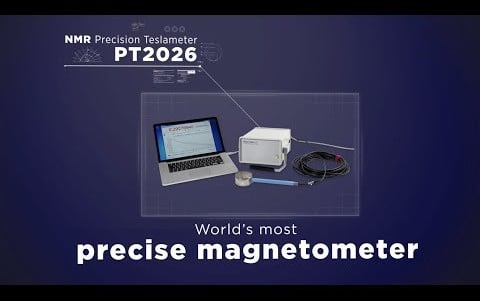Live on physicsworld.com: “Magnetic-field cameras: mapping a path to optimal MRI performance.”
Made to measure: Metrolab’s MFC2046 camera system accommodates for magnet “ramping” and detailed field mapping of MRI systems – a combination that saves time and money in the assembly plant and during system installation in the clinic.
Magnetic resonance imaging (MRI) has become a mainstay of medical imaging facilities. Superior soft-tissue contrast versus CT scans and the use of non-ionizing radio waves to visualize a rich matrix of practical information – including blood volume/oxygenation and localized metabolic activity within tumor sites – represent a winning combination for clinicians in the diagnosis and treatment of all manner of diseases.
Underpinning that clinical capability is an array of enabling technologies, the most extensive and most expensive of which is the cryogenically cooled superconducting magnet that sits at the heart of today’s cutting-edge MRI scanners. Clinical MRI machines typically have a magnetic field strength in the range 0.1 to 3.0 T – though research systems for human and small-animal applications are available at much higher fields (up to 25 T). In every case, these multimillion-dollar systems require a magnetic field that combines extreme stability with extreme uniformity (to within a few ppm) to ensure optimal imaging performance.
To service that need, Swiss manufacturer Metrolab Technology SA, a market leader in precision magnetometers, has developed a portfolio of measurement tools and accessories to enable MRI equipment manufacturers to quantify and map the magnetic subsystems at the heart of their clinical MRI scanners. MRI equipment vendors use Metrolab’s products throughout the technology and innovation cycle: to support R&D on next-generation systems; in the production and assembly plant; and during the installation of new MRI machines in clinical facilities… Read the full article on Physics World!







